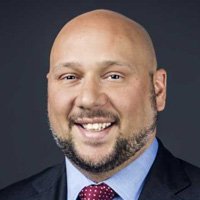An Easy Way to Find How Much You Will Spend in Retirement
One simple math equation can help you determine where to start building your retirement income plan, and whether your money should last.

How do you know when you can retire? The answer seems simple: When you have enough income coming from your investments and other sources to sustain your lifestyle.
The problem for many retirees and those who are starting to think about retirement is they don’t have a firm handle on how much money they spend each year. Not knowing that number or planning for it can be the difference between someone having a great retirement and someone running out of money.
Luckily, this is usually easy to figure out. Most people have one or two checking accounts from which all the bills are paid — credit cards, mortgage, cash withdrawals, etc. On your bank statement, banks total up everything that happened with your account during the month, including:
From just $107.88 $24.99 for Kiplinger Personal Finance
Become a smarter, better informed investor. Subscribe from just $107.88 $24.99, plus get up to 4 Special Issues

Sign up for Kiplinger’s Free Newsletters
Profit and prosper with the best of expert advice on investing, taxes, retirement, personal finance and more - straight to your e-mail.
Profit and prosper with the best of expert advice - straight to your e-mail.
- Starting balance
- Deposits (how much new money came into the account)
- Withdrawals and debits (how much money came out of the account)
- Ending balance (how much money was left at the end of the month)
All you do is take the last 12 monthly total withdrawal numbers and add them up. That total is how much money is going out the door each year. This can be a little shocking, as we see most people are off by about 30%, and sometimes much more.
Knowing the dollars going out the door will give you a clearer idea of how much money needs to come in the door in retirement. Remember, that last stage of your life could last 20 to 30 years or more — basically as long or longer than many people live in one house. After you know how much you spend in a year, it’s time to carefully craft a plan for retirement income.
Look at it this way: Building a solid retirement income plan is similar to constructing a sturdy, comfortable house. Like the home-building process, there are three main components to a financial plan for retirement: the foundation, the walls and the roof. Here is a breakdown of each and how it pertains to your retirement planning:
The foundation
Foundational money is money that needs to be secure and produce predictable income that will last for your lifetime. You don’t want to have money that you know you need to live off of in a place where it could lose value.
This is predictable money — you know how much is coming in, when it’s coming and how long it will last. Foundational money, which should be used to cover your core expenses, includes such funds as those from Social Security, pensions and rental properties.
It’s worthwhile for some people to delay taking Social Security. For example, a single person without many assets might want to work as long as possible and delay Social Security benefits to increase their monthly check. Full retirement ages (FRA) for Social Security span from 66 years to 67 years.
Delayed retirement credits are a reward Social Security gives you for putting off claiming your retirement benefit. Credits accumulate for every month from your FRA until age 70 that you postpone filing for benefits. Those delays add 8% per year for every year you wait. For example, wage earners who reach full retirement age at 67, but delay claiming benefits until age 70, will receive an extra 24% tacked on to their monthly payment.
With pensions, having the joint-and-survivor benefit option is crucial in providing a financial safety net for a surviving spouse. If the pension earner selects the survivor’s benefit, that means a guarantee of steady income to the surviving spouse, sometimes 50% or 75% of the original benefit. People sometimes select the lifetime-only benefit because it pays the highest monthly benefit, but it will be paid only while the pension-earning spouse is alive.
The walls
Much like the walls of a home provide protection from the weather and help support the roof, the walls in a retirement plan are stable, relatively safe investments with minimal risk that add security for the retiree. These funds include certificates of deposit, fixed annuities and bonds. They are much less volatile than stocks, provide dividends and interest, and allow one to pull money for special occasions, vacations, hobbies and things retirees typically like to do during their first 10 years of retirement.
A fixed annuity provides a predictable source of retirement income. It offers a guaranteed rate of return, regardless of whether the insurance company earns a sufficient return on its own investments to support that rate. The risk is on the insurance company. One downside of a low-paying fixed annuity is it may not keep up with inflation.
Top-paying CDs pay higher interest rates than most savings and money market accounts in exchange for leaving the funds on deposit for a fixed period. They offer lower opportunities for growth than stocks and bonds, but have a guaranteed rate of return.
High-quality bonds offer a steady, though relatively low, return with a low risk to the principal investment. Interest payments in retirement are a good way to supplement income. The key difference between bonds and annuities is that the interest payments come for a set period with a bond, whereas annuities often pay for the rest of your life.
The roof
These are riskier types of investments, such as stocks, mutual funds, exchange-traded funds, real estate investment trusts (REITs), precious metals like gold and silver and variable annuities. These funds should have a 10-year-plus time horizon on them and, since the point of having them is to realize financial growth, they are the best sources for keeping up with inflation.
With a house, most people have to re-shingle the roof after a certain period of time because it takes a beating from the weather. The same can be true of the markets: Their volatility means, at times, one needs to adjust.
Putting the roof on your financial house involves calculated risk for long-term growth. The rule of 100 is a helpful guide to determine the maximum percentage of a portfolio that should be invested in risky instruments. Take the number 100, subtract your age, and that number determines the percentage of money that can be at risk. The closer you get to retirement, the lower percentage you should risk in the roof.
For example, a 55-year-old, following the rule of 100, would invest 45% of their portfolio in stocks and mutual funds, while someone who is 65 would dial it down to 35%.
Your home is built to last. Likewise, your retirement plan should be solid from the foundation to the roof. And like a well-built home can bring happy memories for decades, a financial strategy carefully balancing security with growth can give you the enjoyable retirement you deserve.
Dan Dunkin contributed to this article.
Investment advisory services offered through Virtue Capital Management, LLC (VCM), a registered investment advisor. VCM and Bella Advisors are independent of each other. Patrick Mueller and/or Bella Advisors are not affiliated with or endorsed by the Social Security Administration or any other government agency.
The appearances in Kiplinger were obtained through a PR program. The columnist received assistance from a public relations firm in preparing this piece for submission to Kiplinger.com. Kiplinger was not compensated in any way.
Profit and prosper with the best of Kiplinger's advice on investing, taxes, retirement, personal finance and much more. Delivered daily. Enter your email in the box and click Sign Me Up.

Patrick Mueller, president of Bella Advisors, is a licensed investment adviser representative, an RFC (registered financial consultant) and co-author of "Dare to Succeed." He has passed the Series 65 securities exam and is a licensed insurance agent in Georgia, Alabama and Florida.
-
 Don't Wait Until January: Your Year-End Health Checklist to Kickstart 2026
Don't Wait Until January: Your Year-End Health Checklist to Kickstart 2026Skip the fleeting resolutions and start the new year with a proactive plan to optimize your longevity, cognitive health, and social vitality.
-
 Premium Rewards Cards: More Perks, Higher Fees
Premium Rewards Cards: More Perks, Higher FeesSome issuers are hiking the annual fee on their flagship luxury credit cards by hundreds of dollars. Are they still worth using?
-
 3 Trips to Escape the Winter Doldrums, Including An Epic Cruise
3 Trips to Escape the Winter Doldrums, Including An Epic CruiseThree winter vacation ideas to suit different types of travelers.
-
 How to Master the Retirement Income Trinity: Cash Flow, Longevity Risk and Tax Efficiency
How to Master the Retirement Income Trinity: Cash Flow, Longevity Risk and Tax EfficiencyRetirement income planning is essential for your peace of mind — it can help you maintain your lifestyle and ease your worries that you'll run out of money.
-
 I'm an Insurance Expert: Sure, There's Always Tomorrow to Report Your Claim, But Procrastination Could Cost You
I'm an Insurance Expert: Sure, There's Always Tomorrow to Report Your Claim, But Procrastination Could Cost YouThe longer you wait to file an insurance claim, the bigger the problem could get — and the more leverage you're giving your insurer to deny it.
-
 Could a Cash Balance Plan Be Your Key to a Wealthy Retirement?
Could a Cash Balance Plan Be Your Key to a Wealthy Retirement?Cash balance plans have plenty of benefits for small-business owners. For starters, they can supercharge retirement savings and slash taxes. Should you opt in?
-
 7 Retirement Planning Trends in 2025: What They Mean for Your Wealth in 2026
7 Retirement Planning Trends in 2025: What They Mean for Your Wealth in 2026From government shutdowns to market swings, the past 12 months have been nothing if not eventful. The key trends can help you improve your own financial plan.
-
 What Defines Wealth: Soul or Silver? Good King Wenceslas' Enduring Legacy in the Snow
What Defines Wealth: Soul or Silver? Good King Wenceslas' Enduring Legacy in the SnowThe tale of Good King Wenceslas shows that true wealth is built through generosity, relationships and the courage to act kindly no matter what.
-
 An Investing Pro's 5 Moves to Help Ensure 2025's Banner Year in the Markets Continues to Work Hard for You in 2026
An Investing Pro's 5 Moves to Help Ensure 2025's Banner Year in the Markets Continues to Work Hard for You in 2026After a strong 2025 in the stock market, be strategic by rebalancing, re-investing with a clear purpose and keeping a disciplined focus on your long-term goals.
-
 Introducing Your CD's Edgier Cousin: The Market-Linked CD
Introducing Your CD's Edgier Cousin: The Market-Linked CDTraditional CDs are a safe option for savers, but they don't always beat inflation. Should you try their counterparts, market-linked CDs, for better returns?
-
 How to Protect Yourself and Others From a Troubled Adult Child: A Lesson from Real Life
How to Protect Yourself and Others From a Troubled Adult Child: A Lesson from Real LifeThis case of a violent adult son whose parents are in denial is an example of the extreme risks some parents face if they neglect essential safety precautions.
